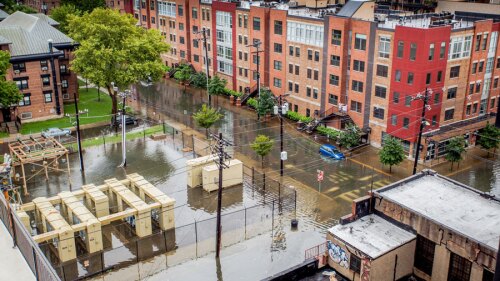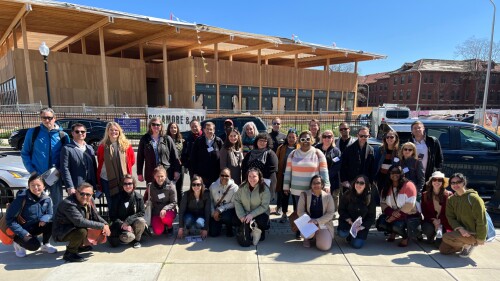Resilience and Sustainability
As the use of mass-timber construction gains momentum in the multifamily development business, it is still taking baby steps in the U.S. industrial market. Last October, Affinius Capital and Seefried Industrial Properties attracted plenty of attention when they completed a 161,000-square-foot (14,900 sq m) wood-paneled warehouse outside Dallas, one of the first of its kind in the country, and more are planned or under construction.
Most homeowners do not have flood insurance, and what’s worse, many buyers are unaware when purchasing a home of its flood history. Armed with new research on the steep costs of not disclosing flood history and claims, advocates are pushing states to strengthen or introduce new flood risk disclosure laws.
Hospitals and health care facilities play a critical role in cities and towns across the country, serving as an employer as well as meeting one of the community’s crucial needs. But over the past decade, that important role has begun to evolve. Spurred in part by requirements under the Affordable Care Act, enacted in 2010, hospitals are expanding their role to focus on health not just for the individual, but also for the wider community, panelists said during a session at the ULI Spring Meeting in Toronto.
ULI has announced the participants in the sixth cohort of the ULI/Randall Lewis Health Mentorship Program, which is supported by ULI Foundation governor Randall Lewis and managed by ULI Building Healthy Places. Since 2017, the Health Mentorship Program has supported professional network building, learning, and exchange between students and ULI member experts working at the intersection of health and the built environment.
One company is retrofitting the heating system in five New York City apartment buildings with equipment to capture and remove carbon dioxide. The carbon dioxide is then converted to liquified form, enabling it to be repurposed as an ingredient in concrete blocks, making construction of new buildings greener as well.
Around the globe, individuals, organizations, and governments come together each year to celebrate and acknowledge Earth Day. Since its first observance in 1970, Earth Day has served as an annual reminder of the environmental challenges the world faces while inspiring solutions and positive change. The theme of this year’s event is “investing in our planet,” which resonates with the work of ULI and its members to address environmental issues through the Randall Lewis Center for Sustainability in Real Estate.
Thirty professionals in real estate and community development, planning, design, research, engineering, finance, and public health from across the globe have been selected to participate in the sixth cohort of the Health Leaders Network—designed to empower real estate and land use professionals with the skills, knowledge, and networks to improve health and social equity outcomes in their professional practice and communities.
To learn more about this crucially important topic, Urban Landreached out to Jessica Weyandt, senior associate, due diligence–engineering at Revantage, who will take part in a panel discussion on this subject at ULI’s upcoming 2023 Resilience Summit this May in Toronto.
ULI’s new report, Parks That Protect: Leveraging Waterfronts for Resilient Communities, describes seven leading-edge waterfront park projects from around the world that are built to protect adjacent neighborhoods.
As the real estate industry focuses increasingly on the mantra of carbon efficiency, owners and occupiers are scrambling to find ways to reduce carbon footprints. A recent ULI conference in Hong Kong brought together experts across a range of disciplines to discuss the migration to net zero for both new and retrofitted buildings.







